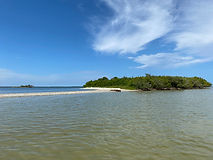Electrofishing the Southeast
- Tyler Steven Coleman
- Mar 19, 2018
- 2 min read
Updated: Jul 13, 2020
Electrofishing (also known as shocking) is a popular fisheries management technique used all over the United States. It can help estimate populations, assess communities, remove invasive species, target certain species of interest, and much more. Electrofishing can be used in a vast amount of aquatic systems by using a backpack electrofisher or a boat electrofisher. Any aspiring-to-be fisheries biologist will become familiar with this sampling technique due to its popularity and effectiveness.
My time working as a fisheries technician for the USGS allowed me to start off in fisheries on the correct path. I was able to backpack electrofish for brown trout in the Great Smokey Mountains and small darters and sculpins in Tennesee streams and rivers, boat electrofish for rainbow trout in rivers below dams, invasive Asian carp in Kentucky Lake and Lake Barkley, and catfish and bass species in multiple reservoirs. Working on a vast amount of electrofishing projects and learning about a variety of ecosystems as a young undergraduate was an amazing experience.
From the USGS, I moved on to work as a Fish and Wildlife Biological Scientist II for the Florida Fish and Wildlife Conservation Commission where my experience electrofishing then blossomed. I was electrofishing for population estimates of Florida strain largemouth bass all over the state almost every day. When shocking, fish are obviously not the only thing affected by electricity in the water. Observing turtles rush to a tree, large gator tails whipping out of the electrical current, birds racing to the surface, and even manatees hitting the boat because of the uncomfortable shock was all an amazing experience. Of course one of the first things you learn when electrofishing is to get off the pedal/button if anything/anyone is even remotely near in the water. So, learning to not only be aware of fish coming to the surface of the water, but also all of these other animals was an interestingly awesome experience. While electrofishing in Florida, I was also able to sample for redfish, sea trout, trophy-sized largemouth bass, effectiveness of different types of fish attractors, and much more.
Currently, I am in Alabama electrofishing many private small impoundments and state county lakes for largemouth bass and bluegill population assessments for part of my thesis work. Not as many gators or manatees, but still a fun and effective sampling technique that will forever be used in fisheries management.






















Comments